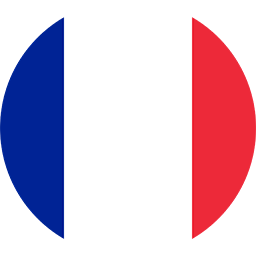What is the difference between CTC and PI-Rail?
PI-Rail is the open-source foundation of the CTC products. On the PI-Rail project pages on GitLab, you will find the complete source code for the CTC app and the firmware of the CTC modules.
CTC (Clever Train Control) primarily provides ready-to-use modules for locomotives, turnouts, signals, etc., as well as consulting and the service of retrofitting to CTC.
Why does CTC require DC? Märklin runs on AC, after all.
CTC works with DC, AC, and digital current.
The motor is controlled using pulsed DC (PWM). This is not a problem, as Märklin motors have always been suitable for DC.
With AC, ensure that the support capacitors on the modules are large enough to generate the required DC voltage for the processor. The current CTC turnout modules and CTC Multi-I/O Boards feature sufficiently sized support capacitors.
A larger support capacitor should also be installed in locomotives.
Can the layout also be operated using control software via PC?
PC control software that supports the Z21 LAN protocol can generally communicate with CTC, but it cannot fully exploit CTC’s potential.
Starting from version 6, iTrain can directly address CTC modules for the first time. The CTC and iTrain teams are working closely together to further expand this support.
Which control software would you recommend?
We clearly recommend iTrain, as it directly supports CTC starting from version 6. Additionally, iTrain is one of the few PC control systems—like CTC—that runs on all common platforms, not just Windows.
Do already digitized locomotives, cranes, etc., need to be retrofitted?
Yes, if you want to operate them together via the CTC app.
However, you can control locomotives, turnouts, etc., on a layout using your existing digital command station while simultaneously controlling CTC-retrofitted locomotives and turnouts with the CTC app. However, the two systems will not be aware of each other, meaning automated operations will be very limited.
If you use PC control software like iTrain, you can integrate both CTC and your old digital command station. This allows for limited mixed operation.
Do you no longer need a command station?
Correct—CTC works entirely without a command station. You only need a power supply (track or battery) and a Wi-Fi access point.
What is the purpose of the CTC Multi-I/O Board?
The CTC Multi-I/O Board is comparable to a CTC turnout module, but it has 8 instead of 4 switching outputs, plus 4 sensor inputs and 2 connections for model railway servos.
What should be considered regarding old metal tracks, plastic tracks, and infrared transmitters?
The infrared transmitters must be installed between the sleepers. For metal and C-tracks, holes must therefore be drilled into the rails.
We are currently experimenting with thin electronic films. If successful, the infrared diodes can also be placed on the sleepers. This would eliminate the need for drilling.
Are infrared transmitters essential for control?
CTC also supports classic sensor concepts such as track contacts and reed relays. The CTC Multi-I/O Board has four connections for this purpose.
However, you will lose the advanced features of infrared transmitters:
- Automatic stopping before a signal
- Reliable position display in the track diagram
- Display of the locomotive’s average speed in the app
- Automatic calibration of the locomotive’s motor sensor
- Automatic recognition of locomotive positions
Are the circuit boards for elements like turnouts, infrared, I/O boards, etc., delivered in housings?
The circuit boards currently do not come with housings. For CTC turnout modules, there is a holder for easy mounting on the baseboard if they are not installed in C-track.
Is Wi-Fi signal reception in Märklin’s metal locomotives really reliable?
We have already retrofitted various locomotives with metal housings. We were surprised ourselves at how smoothly the radio connection works with these locomotives. Here are some specific Märklin examples:
- Old V200 (No. 3021)
- Swiss Re 4/4 II from Digital Starter Set (No. 29859)
- Vectron BR 247 – 30 Years MHI (No. 36292)
Can locomotives with bell-armature or sinusoidal drives also be retrofitted?
Our current locomotive modules cannot do this directly. However, with the help of a separate driver module, this should generally not be a problem. A suitable locomotive module is already in planning—please contact us if needed.
Is the protocol for the locomotive decoders available, i.e., which commands control the locomotives?
Yes—the entire software is published as open-source under the name PI-Rail on GitLab. You can therefore use any combination of CTC-purchased modules, CTC software, and your own developments.
The documentation is still being developed—please contact us if you have questions.
By the way, we welcome anyone who wants to contribute to PI-Rail (the technical basis for CTC).
I can’t find the CTC app for Android in the App Store. Is that the app’s name, or is it called something else?
The app is not yet available via the App Store. However, you can currently download it as an APK file directly from the project page on GitLab.
How do you connect lighting and light signals to CTC modules?
You can connect lighting and light signals to the switching outputs of the CTC Multi-I/O Board (or the CTC turnout module): one output per light. For LEDs, appropriate current-limiting resistors should be included with the lighting or light signal.
For Viessmann light signals, note that those with “multiplex connection” (item no. 47xx) cannot be directly connected to a CTC module, but only to Viessmann’s “multiplexer.” However, you can connect its push-button inputs to the switching outputs of CTC modules.
The new Märklin light signals can be controlled via DCC using a CTC locomotive module and the DCC firmware.



